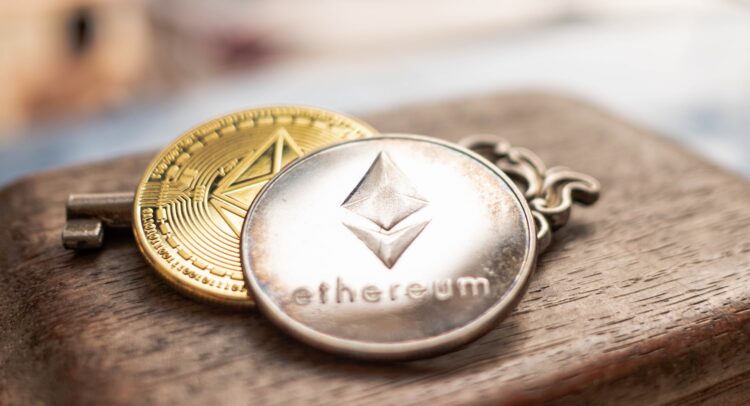Picture Ethereum (ETH-USD), the granddaddy of smart contract platforms, like an old highway in dire need of an upgrade to handle the heavy traffic. High congestion and wallet-busting fees were daily hassles. Enter Layer 2 solutions, the sort-of superheroes of crypto and blockchain, swooping in to clear the traffic jam with finesse and speed.
Elevate Your Investing Strategy:
- Take advantage of TipRanks Premium at 50% off! Unlock powerful investing tools, advanced data, and expert analyst insights to help you invest with confidence.
Origins and Objectives
Layer 2 solutions were spawned out of sheer necessity. Ethereum, with its pioneering technology, became a victim of its own success. As the platform grew in popularity, it became clear that scalability was about as limited as an honest politician in an election year. Transaction times slowed, and fees skyrocketed—enter the need for a clever bypass, Layer 2s.
The Genesis of Layer 2s
The first solutions emerged as creative attempts to decongest the main Ethereum chain without sacrificing its core principles:
- Plasma: Proposed by Vitalik Buterin and Joseph Poon in 2017, it was one of the earliest concepts aiming to enable off-chain transfers, whilst ensuring blockchain integrity.
- Raiden Network: Ethereum’s counterpart to Bitcoin’s Lightning Network, focused on fast and cheap off-chain payment channels.
These pioneers paved the way for the varied landscape of Layer 2s we see today.
What’s a Layer 2 Anyway?
At their core, Layer 2s are built atop Ethereum’s existing blockchain, acting like express lanes on our congested highway. They handle transactions off the main chain, touching base only when absolutely necessary—keeping things zippy and wallet-friendly.
Here’s what these Layer 2 dynamos bring to the table:
- Speedy Transactions: Lightning-fast transaction speeds.
- Fee Reduction: Dramatically lower fees.
- Enhanced Scalability: Supporting more users than ever before.
The Main Contenders
Each type of Layer 2 has its special tricks:
- Rollups: These bundle transactions into one package before settling on Ethereum. They come in two types:
- Optimistic Rollups depend on trust but verify periodically.
- ZK Rollups use zero-knowledge proofs to ensure validity without revealing data.
- State Channels: These handle transactions off-chain and only interact with Ethereum in the event of disputes.
- Sidechains: Operating independently, these chains sync with Ethereum to communicate their transactions.
The Trade-Offs
Security: Not Quite Fort Knox
- Centralization Risks: Some L2 solutions, particularly those involving fewer validators for the sake of efficiency, can inadvertently centralize control. This not only contradicts the decentralized ethos of blockchain but could potentially make the system more susceptible to attacks or manipulation.
- Security Reliance on Underlying Technology: The security of L2 solutions often hinges on the robustness of the underlying technology. Any flaw in these technologies could be catastrophic.
Technical Complexity: Rocket Science Much?
- Interoperability Issues: L2 solutions are diverse, each with unique architectures and operational mechanisms. This can lead to compatibility issues when interacting with other blockchain services or between different L2 solutions themselves.
- Upgrade Coordination: Upgrading these solutions can be as tricky as replacing a jet engine mid-flight. Coordination between different network participants must be precise to avoid disruptions.
Economic and UX Challenges: No Free Lunch
- Variable Transaction Costs: While generally lower, fees on L2s can still fluctuate based on network congestion and the specific operations performed. This unpredictability can be a headache for users accustomed to more stable costs.
- Liquidity Fragmentation: Assets locked in one L2 might not be easily moved to another, leading to liquidity silos. This can limit the overall efficiency of capital across the ecosystem.
- Additional Steps for Users: Interacting with L2s often involves additional steps, such as depositing funds from L1 to L2 and managing different wallets, which can complicate the user experience.
Legal and Regulatory Uncertainty: Tread Carefully
- Compliance Concerns: As regulatory frameworks for blockchain technology continue to evolve, L2 solutions may face scrutiny regarding compliance, particularly if their operational mechanisms obscure transaction details or enable faster cross-border transfers.
- Data Privacy Issues: L2s that compress or alter transaction data to achieve scalability might inadvertently conflict with global data privacy standards, posing a risk both to users and operators.
Despite these potential risks, the development and adoption of L2 solutions are seen as crucial for Ethereum to maintain its position at the forefront of the blockchain revolution. By understanding and mitigating these risks, developers and users can help pave the way for a more scalable, efficient, and user-friendly blockchain ecosystem.
But what happens to the L2s if Ethereum solves all of its scalability and fee issues? That’s a crisis for another day.
Don’t let crypto give you a run for your money. Track coin prices here
















